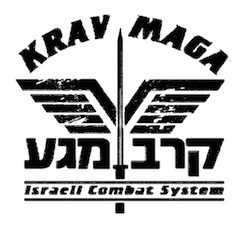History of Krav Maga

The history of Krav Maga is as exciting as the system it self. The founder of Krav Maga was Imi Sde-Or. The history is closely linked to the development of the state of Israel and the need for the Israeli military to protect it's country in one of the worlds most hostile areas.
Given Imi's extensive self defense skills, Imi was recruited by Isaac Sadeh, the commanding officer of the Haganah in 1942. Two years later he began to teach Kapap (hand to hand combat) and physical exercise to the most elite special forces units of the Haganah, Palmach, and Palyam. During this period, firearms were outlawed and in very scarce supply. They were hidden away from the British and only used for special missions. The fact that firearms could not be used had a great influence on the development of the style. Unarmed combat was absolutely essential for the success of the military.
In 1948, when the State of Israel was founded and the IDF was formed, Imi became Chief Instructor for Physical Fitness and Krav Maga at the IDF School of Combat Fitness. He served in the IDF for about 20 years, during which time he developed and refined his unique method for self-defense and hand-to-hand combat. It was his job to see to it that the troops of the IDF including the special forces units were expertly skilled in hand to hand combat. During this time, Imi further refined his face to face fighting techniques (now referred to as Krav Maga).
Upon retiring from the IDF in the early 60's, Imi began adapting the style for civilian use. He established two schools, one in Netanya and one in Tel Aviv.
The work in the following years and up to today, was to design the system to confront every day attacks and street confrontation problems. Imi and his senior students set about designing Krav Maga as a complete system. Imi's close assistant from the 80's and until his death was, Eyal Yanilov
New problems were discovered and Imi set about finding solutions to them, with the help of his senior instructors. The core of the system has always been simplicity and effectiveness, and Imi was always looking for the easy solution to most problems.
Many changes was made to the system both technically and visual, but in all the work that was done Imi never forgot the base of the system, simplicity, effectiveness and realism.
One interesting result of this was Krav Maga's use of belts. In the early system Imi did not use belts in training, because it was a military system. But seeking recognition from his fellow martial artists he designed a belt system based on the Judo system of white-yellow-orange-green-blue-brown-black. The system was divided into grades making it easier to organize. He also started training in gi's (white judo training suits). In the 90's however Imi decided that belts no longer should be a part of the system as it originally did not have a place there and that the use of belts did not have any realistic or practical meaning in the system. The system of grades was kept, but the belts were taken out and replaced with a system of Practitioner/Graduate/Expert levels. The training suits today also consist of black pants and white t-shirts. Some countries still uses the belts in the curriculum, but not in training.
Imi and his senior instructors formed the first Krav Maga Association in 1978, and in 1992 Imi expressed a desire to make an international federation to help spread his system to the world. In 1995 his dream came true and the International Krav Maga Federation was formed in Netanya, Imi's home place.
To the present day the style has grown greatly with associations and affiliations in Israel, the United States, France, Sweden, Finland, Norway, Great Britain, Brazil, Thailand and throughout the world. It is used on a day to day basis by the IDF including the special forces units and the Israeli police and security branches, and by many other elite units in North America, South America, Europe, and around the world. The style has also become, as Imi sought to make it, a major source of civilian self defense instruction.
On Jan 8th 1998, Imi Licthenfeld, aged 88, passed away
